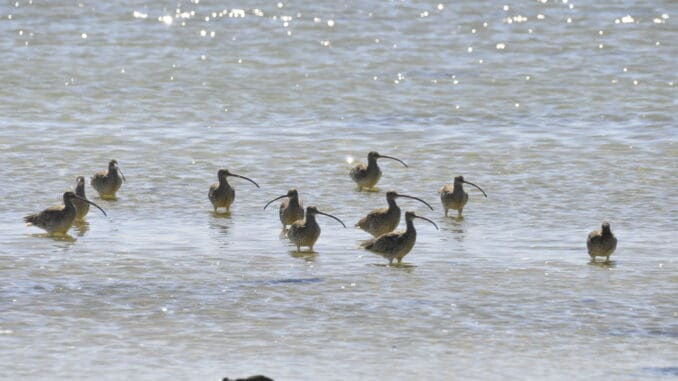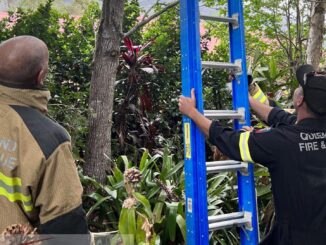
Australia is home to a number of migratory shorebird species. One of the most easily recognised is the Far Eastern Curlew.
This species is easily identified by its large size, long down-curved bill and haunting call.
To the average Australian, the Far Eastern Curlew would be described as brown in colour. However, closer observation reveals brown barring on the upperparts and chest region of this bird. The underside of the chest and tail is pale in colour.
The preferred habitats of this bird species include tidal mudflats, estuarine creeks and sandspits.
Far Eastern Curlews can be seen to be solitary or gathering in small to large flocks in the company of other migratory shorebirds. These birds do not breed in Australia and leave during March and April to migrate to northern Asia to breed. The birds usually arrive back in Australia in August. Some birds do winter in Australia.
When the birds are present in Australia, they can be seen along most of the continent’s coastline. Some birds may also be seen in New Zealand.
Although the Far Eastern Curlew would appear to be common, it is one of many migratory shorebird species which is declining.
A number of factors are contributing to this but the loss of traditional feeding, roosting and nesting habitats are by far the most critical.
One of the best places to see the Far Eastern Curlew is in Moreton Bay. Locations that have tidal mudflats are the best places to start looking.
Once the birds are spotted, it pays to approach them cautiously, as they are easily startled.
For all shorebirds, it is best to approach the birds at a distance that they are comfortable with and observe with a spotting scope.
The disturbance of shorebirds is another factor which is contributing to the demise of these birds. Protection of the birds’ habitat is vital to their long-term survival.
It would be a tragedy to lose these ‘brown’ birds from our marine waterways that we are all so familiar with when we are out and about on the water.





